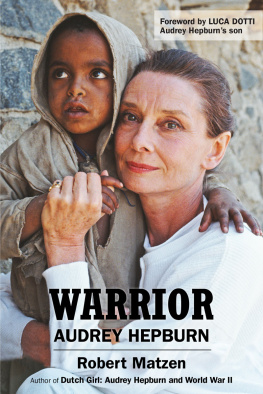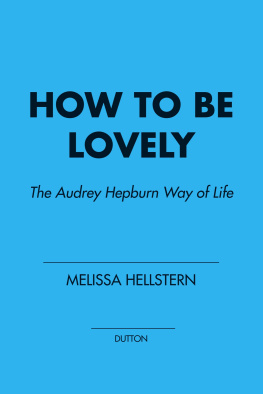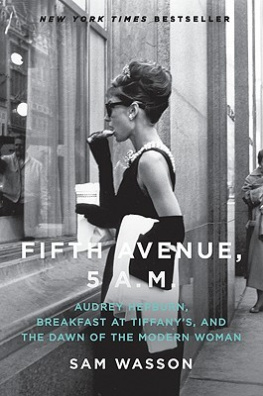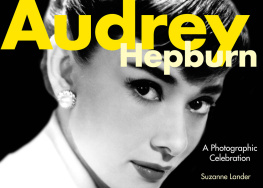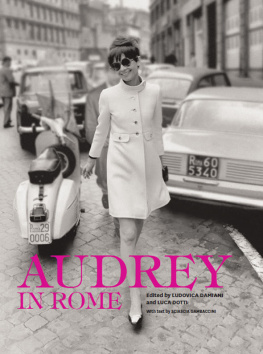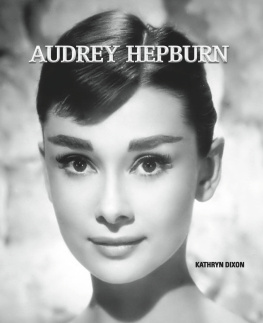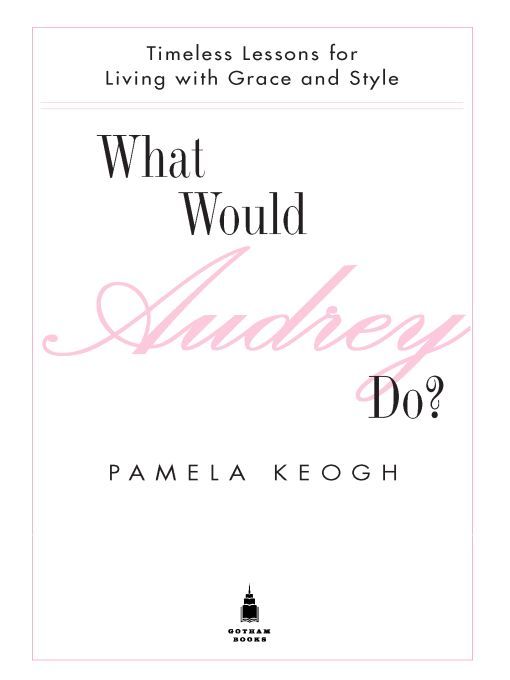Table of Contents
ALSO BY PAMELA KEOGH
Audrey Style
Jackie Style
Elvis Presley:
The Man. The Life. The Legend.
| For Linda Chester
Introduction
Audrey Hepburn came to the attention of most Americans in September 1953, when she got above-the-title billing as Princess Ann in Roman Holidaycapturing the heart of her costar, Gregory Peck, as well as a generation of moviegoers who wondered: Who is that young woman? Her name, we soon learned, was Audrey Kathleen Hepburn-Ruston, she was the daughter of a baroness, and within weeks of the films release her gamine style, her singular offscreen fashion sense, and even her haircut were copied by a generation of women throughout the world.
At a time when the prevailing notion of the acceptable way for women to dress was highly sexual, with a very obvious silhouette of large breasts, a tiny waist beneath a full skirt, and mincing heels, by her example, Audrey offered another way for women to dress, behave, aspire to, and even be.
And almost fifty-five years since we first saw Roman Holiday, Audrey is still showing us how its done. As a style icon, her influence is unrivaled. In 2006, New Woman magazine voted her the Most Beautiful Woman of All Time. On Seventh Avenue, in Hollywood, in the halls of Vogue, People magazine, or InStyle, to describe something (or someone) as very Audrey is shorthand for the absolute height of chic.
Today, fashion designers are the new rock stars. On television, shows like Americas Next Top Model and Project Runway attempt to demystify the fashion world, and not an awards show goes by without stars being asked: What are you wearing?
But Audrey wasand still isthe first. Every fall or spring, it seems, another designer mimics the clean lines of her crisp white shirt, the little black dress, or beautifully fitted Givenchy-esque suit. Often without realizing it, the best dressed among us are still reveling in the lessons Audrey taught.
When you see someone wearing oversized sunglasses with an evening gown, thats not originalthats Audrey. Ballet flats outside of a dance studio? Audrey was the first. The straight line of a black sweater and fitted black trousers that every fashion editor in the world seems to favor? Way before Prada had fashionistas dressing like they were en route to a beatnik funeral, Audrey was appearing that way quite radically for the timein the mid 1950s.
But the way she dressed was almost the least of what makes Audrey cool. Decorator Jeffrey Bilhuber, who has worked with some of the most stylish women of our time, believes that Audrey is still so compelling today because of who she was: Audrey never systematically schemed to become a starshe had stardom within her... it didnt have to be created or manufactured. It was always there. She would have been as admirable a math teacher as she would have been a movie star, because she was predestined for greatnessshe was what she was.
Her cultural influence is still so iconic that in September 2006, Gap unveiled the Audrey Hepburn Pant to Middle America (much to the chagrin of many of her fansnothing less than a travesty, said one fashion bloggerand her more proper Hollywood friends) with a television ad that featured a computer-generated Hepburn dancing to the very non-Audrey AC/DCs Back in Black. The fact that the campaign was okayed by her sons Sean Ferrer and Luca Dotti, that Gap made a generous donation to the Audrey Hepburn Childrens Fund, mollified few people. They also made her look much thinner than she was in real life, complained a close friend of Audreys.
As to whether Audrey would or would not have sold herself out like that, the jury is still undecidedhad her first marriage to Mel Ferrer not imploded, he might have tried to broker some kind of a deal. But those who knew Audrey knew (as Cary Grant did) that in spite of her fragile appearance, shes like steel, and doubt she ever would have allowed anything so crassly commercial to occur under her name or image. On the other hand, they know she would have done practically anything to help promote the good work of UNICEF.
Audrey was the first celebrity of her stature to use her fame to help others and, beyond that, to help those whom most people did not care about, or barely thought of. Especially today, when the prevailing notion of celebrity is pure ego satisfactionI am famous, therefore I am [and therefore: you owe me]and the bar for being considered famous is sinking lower and lower (appearing on a reality television show, being picked up for DUI, having a blog), Audrey could be considered quite radical because she used her fame for something other than her own personal gain.
As Robert Wolders, her companion and spouse in everything but name and her partner during the happiest years of her life, observed, Audrey sensed at a very early age that fame or stardom doesnt mean that much. So she made a conscious decision within herselfshe was very realistic, and aware that she had to do something with this notoriety, this attention she was getting. Something to help others, if she could. And this was something that she was born with.
Today, Audreys sentiment is increasingly prevalent among the more enlightened celebrities. As Matt Damon recently observed of fame, I think its incumbent on us to do as much good as you can within the sphere of influence that you have. Otherwise, its just a waste of resources.
But before George Clooney and Angelina Jolie, even before Oprah Winfrey was doing so, Audrey and Rob were flying in little planes to some of the most desolate places on earthEthiopia, El Salvador and Nicaragua, Sudan, Bangladesh, and finally, Somalia, the one that broke her heart.
Another more interesting question might be: Why, more than fifty years after Roman Holiday was released, is Audrey Hepburn still being held up as a style (and in our opinion life) icon? Since we first met Audrey in 1953, and after her untimely death in 1993, she has rarely been off the cultural radar. Robert Wolders thinks the answer is simple (although mildly depressing in the society we find ourselves in today): No one has taken her place.
Oh sure, there have been a few pretenders to the throne (Jacqueline Kennedy Onassis, Grace Kelly, Sofia Coppola), but really, has anyone, could anyone, replace Audrey? Were going to go out on a limb here and say no. But rather than get depressed over this (and the fact that we shall never, in this lifetime and quite possibly the next, be able to eat all the carbs we want and never gain weight), lets study Audreys life lessons and learn what we can from her.
As a woman of her influence and stature, Audrey has had dozens of books written about her. Although her face and the on-screen characters she created are famous, there is still much we dont know about Audrey.
Yes, she had a twenty-inch waist that an early Hollywood PR man insisted on encircling in a dog collar as a publicity stunt and having a photographer take a picture of. Hubert de Givenchy remained her friend for life, and was the executor of her estate. Although renowned for her mesmerizing eyes, she did not wear makeup at home. She knew how to iron. She was handy and could fix things. She did not like to drive. Her two divorces almost killed her. She had trouble gaining weight and enjoyed eating bowls of pasta.


